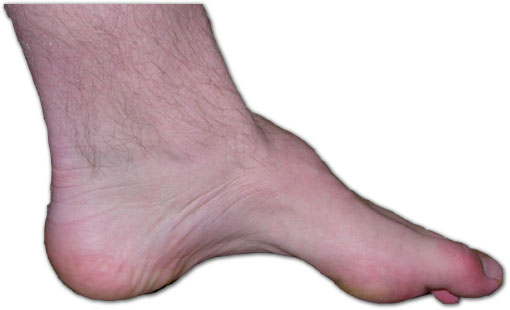COMMON CONDITIONS
High Arched Feet | Pes Cavus Surgery In RICHARDSON, DALLAS, GARLAND, WYLIE, MURPHY.
WHAT IS PES CAVUS OR CAVUS FOOT?
Cavus foot or high arhed feet is a condition in which the foot has a very high arch. Because of this high arch, an excessive amount of weight is placed on the ball and heel of the foot when walking or standing. Cavus foot can lead to a variety of signs and symptoms, such as pain and instability. It can develop at any age and can occur in one or both feet.
PES CAVUS FOOT TYPE:
Pes cavus is an increase of typical plantar concavity, where the front and back weight-bearing areas of the foot are brought closer. A wide range of foot deformities includes a plantarflexed first ray, forefoot pronation and adduction, and hindfoot varus or high calcaneal pitch.
WHAT PROBLEMS CAN PES CAVUS CAUSE?
When you have pes cavus or high arches in your feet, your feet can not absorb shock while walking or running. With the passage of time, stress on heel and ball of the foot cause pain in ankle, foot, leg, thigh and hip.

SYMPTOMS:
Pes cavus feet will appear high even when standing. In addition, one or more of the following symptoms may be present:
- Hammertoes (bent toes) or claw toes (toes clenched like a fist)
- Calluses on the ball, side or heel of the foot
- Pain when standing or walking
- An unstable foot due to the heel tilting inward, which can lead to ankle sprains
- Some people with cavus foot may also experience foot drop, a weakness of the muscles in the foot and ankle that results in dragging the foot when taking a step. Foot drop is usually a sign of an underlying neurologic condition.
DIAGNOSIS:
Diagnosis of cavus foot includes a complete history of the patient’s family. The foot and ankle specialist inspect the foot, searching for a high arch and possible calluses, hammertoes and claw toes. The foot is tested for muscle power, and the patient’s walking pattern and coordination are noticed. If a neurologic condition seems, by all accounts, to be available, the whole limb might be inspected. The specialist may likewise study the pattern of wear on the patient’s shoes.
X-rays are further requested to additionally survey the condition. Foot and ankle consultants can refer you to the neurologist for detailed neurological examination.
TREATMENT OF HIGH ARCHES:
Nonsurgical treatment of cavus foot may include one or more of the following options:
- Orthotic devices: Custom orthotic devices that fit into the cavus foot shoes can be beneficial because they provide stability and cushioning to the foot.
- Shoe modifications: High-topped shoes support the ankle, and shoes with heels a little wider on the bottom add stability.
- Bracing: The surgeon may recommend a brace to help keep the foot and ankle stable. Bracing is also useful in managing foot drop
CAVUS FOOT EXERCISES:
- Towel Stretch – Sitting with your feet before you, loop a towel around the ball of your foot. Flex your foot, at that point and pull back on the towel with your hands to extend your toes.
- Bend Knee Wall Stretch – Stand approximately a foot from a wall with your palms flat on it. Keeping your heels level on the ground, bend the two knees and lean your entire body forward slightly, using the wall to balance.
- Toe Squeeze – Stick your fingers between every one of your toes. Press your toes together as hard as possible for ten seconds, at that point hold and then relax.
- Toe Rolls – With your feet flat on the ground, raise simply your toes up. Gradually lower your toes each in turn so they “move” backdown to the ground.
- Golf Ball Pick-Up – Using simply your toes, attempt to pick up a golf ball from the ground put it into a basket. If that this to too difficult to even think about starting, use a washcloth and marbles first.
These toe practices work the little balancing out muscles and connectors, building their strength and flexibility so they’re less inclined to hurt and cause problems. You don’t need to let your cavus foot ruin your mobility or leave you uneasy.
WHEN PES CAVUS SURGERY IS NEEDED?
If nonsurgical treatment fails to adequately relieve pain and improve stability, surgery may be needed to decrease pain, increase stability and compensate for weakness in the foot. We will choose the best surgical procedure or combination of procedures based on the patient’s individual case. In some cases where an underlying neurologic problem exists, surgery may be needed again in the future due to the progression of the disorder.
If you are continuously suffering from foot pain, Dr. Raymond Delpak has a solution for you.
HIGH ARCHED FEET | PES CAVUS SURGERY IN RICHARDSON, DALLAS, GARLAND, WYLIE, MURPHY
SUBSCRIBE TO OUR NEWSLETTER
*for updates on our medical equipment only

